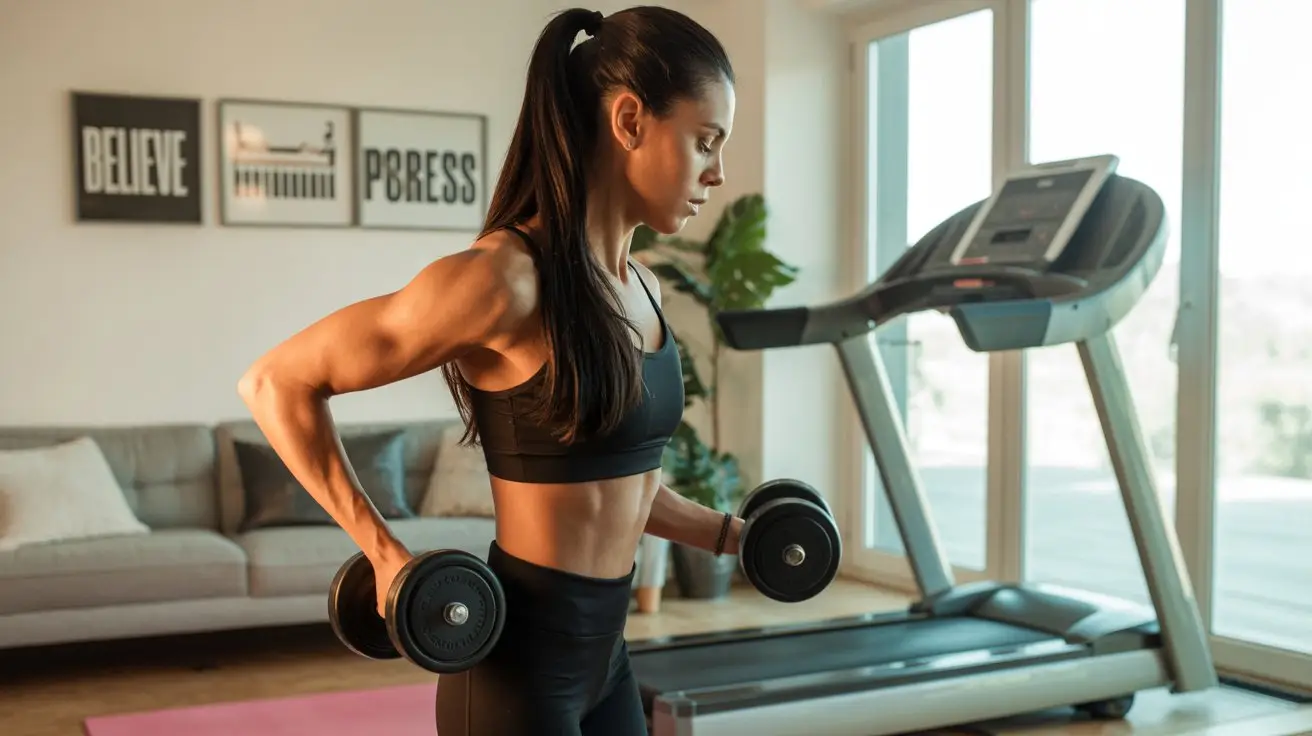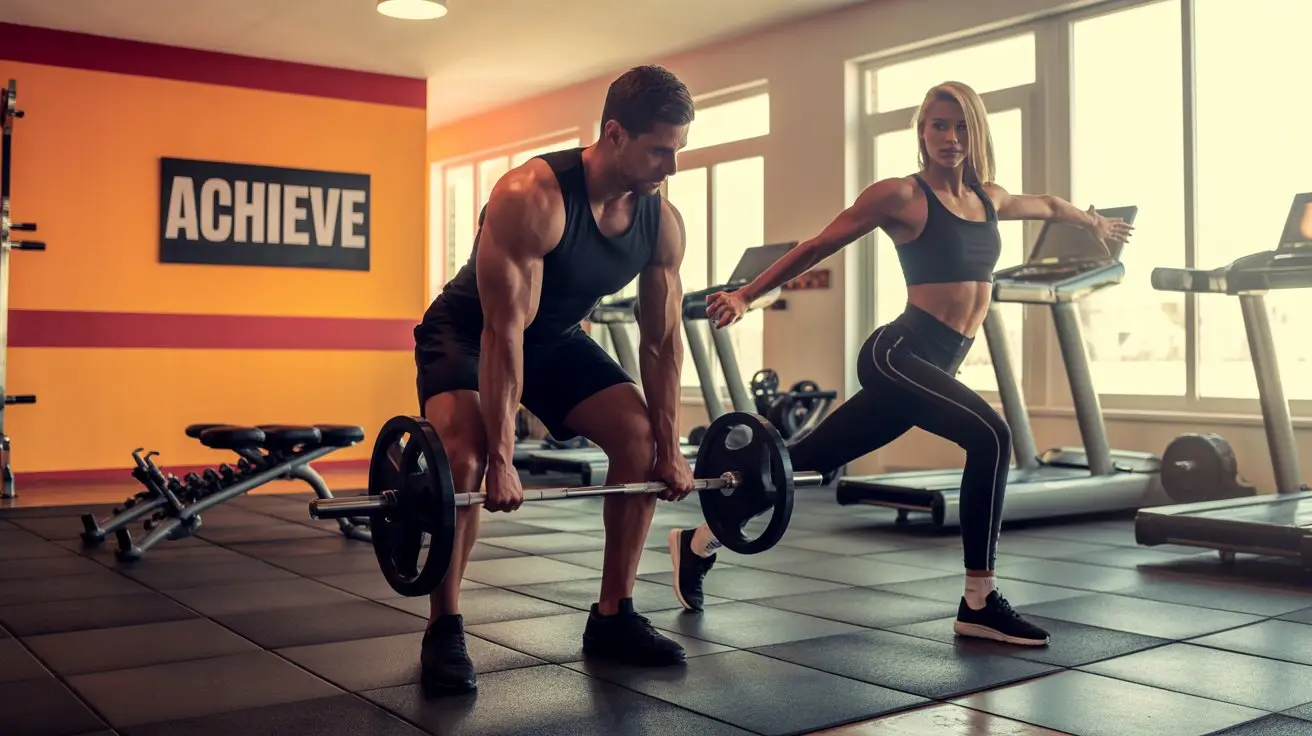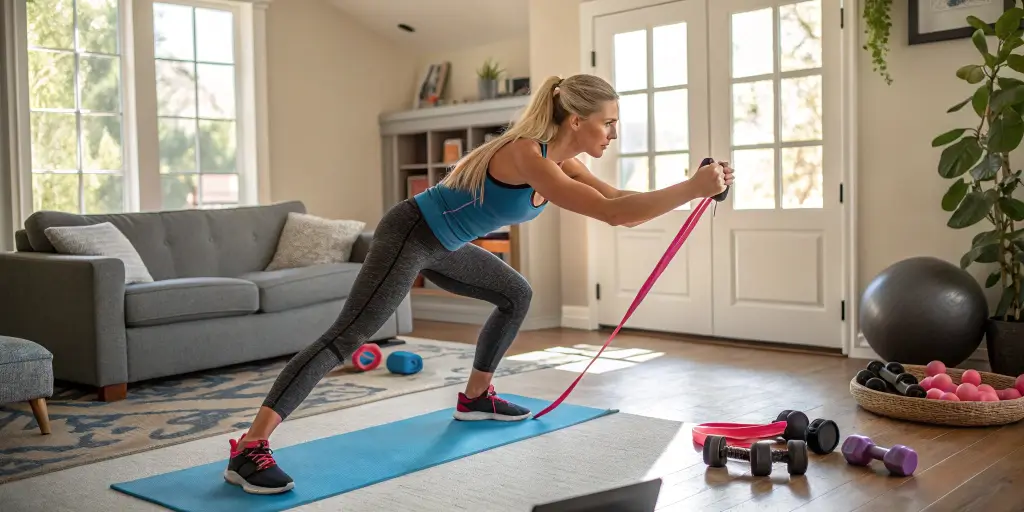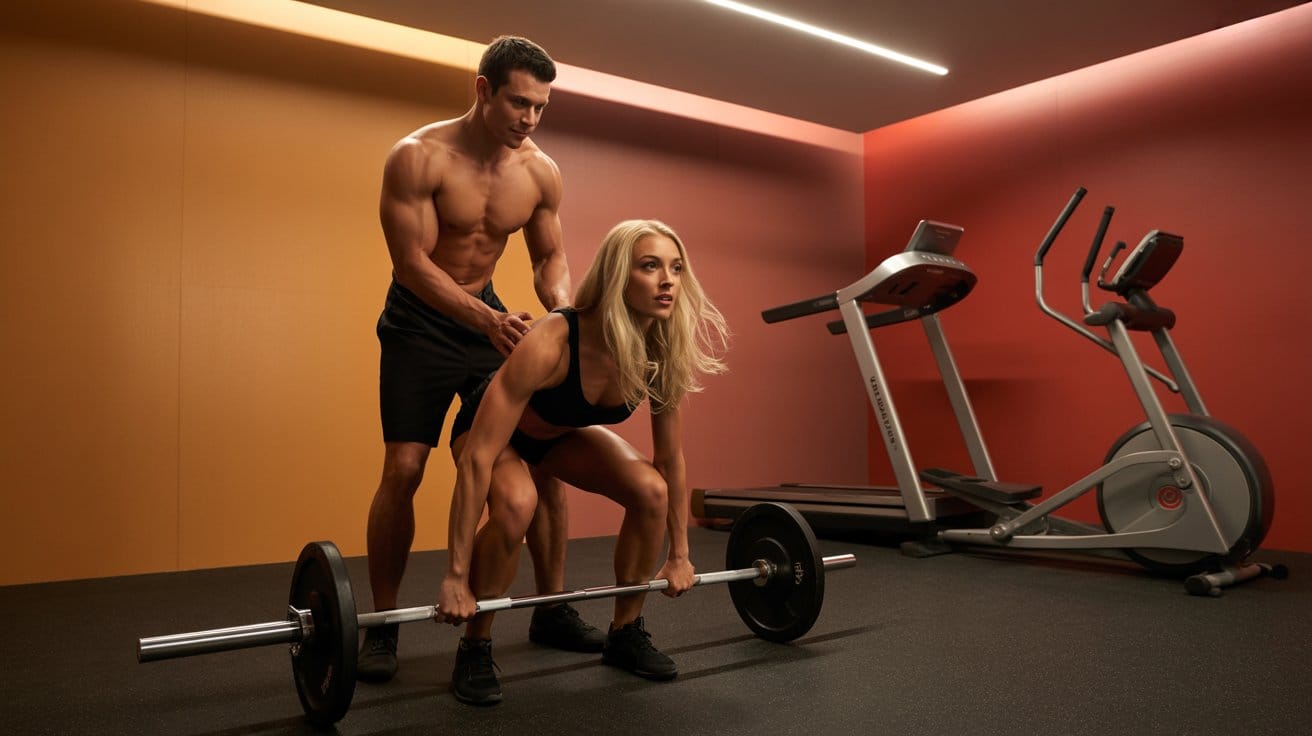Over 40% of gym-goers feel awkward in public gyms. But, you can avoid this and save up to $1,000 a year. Creating a home gym is easy and affordable, costing just $300 for great results. You can skip long commutes and save on gym memberships.
This guide shows how to set up a home gym with essentials like adjustable dumbbells and resistance bands. You don’t need a huge budget to get started. Home workouts can be just as effective as gym ones with the right equipment.

Forget the idea that home workouts are less effective. With the right tools, you can work on legs, core, and strength. For example, the $190 PAPABE 150-pound Dumbbell Set or $100 Everlast conditioning ropes are great options. Even small spaces can be used with reversible yoga mats and compact racks.
The key is to focus on multi-use equipment that improves functional fitness. Let’s explore how to start your home gym journey today.
Key Takeaways
- Building a home gym costs $300–$1,500, saving $500–$1,000 yearly vs. commercial memberships.
- Resistance bands add over 100% more exercise variety compared to dumbbells alone.
- Core-focused tools like kettlebells and slam balls improve functional strength in limited spaces.
- A $57 R-B Rubber Stall Mat reduces injury risk by 25% during workouts.
- Most equipment lasts two years with heavy use, making it a long-term investment.
Assessing Your Available Space for a Home Gym
Turning your home into a workout space at home begins with knowing what you have. Even a small space workout area can be powerful with the right plan. Start by checking every corner—like closets, unused garages, or under the stairs. These spots can be perfect for a home gym setup.
“A 10×10-foot terrace in Glendale became my full home gym design ideas hub. Even tight spaces can thrive with creativity.”

Identify Multi-Purpose Zones
Don’t just look at obvious rooms. Turn a guest bedroom into a workout space at home or make a porch a small space workout area. Important things to consider are:
- Enough floor space for moves like squats or lunges
- Strong walls for hanging racks or pull-up bars
- Power outlets nearby for devices like smart scales
Measure for Motion & Safety
Use a tape measure to map out your space. Make sure there’s 3–4 feet between each piece of equipment to avoid crashes. Try out different layouts by:
- Setting up yoga mats for stretching
- Marking areas for exercises like push-ups or burpees
- Checking if doors open fully with cable machines
Check Structural Limits
Make sure ceilings are at least 8 feet tall for overhead presses. If your floor is carpeted, use rubber mats under heavy equipment to prevent sinking. Turning your house into a gym means paying attention to details like:
- Wall strength for squat racks
- Electrical outlets within reach for smart devices
The Psychology Behind Successful Home Workouts
Creating a home fitness routine is more than just having space. It also needs mental strategies to avoid common obstacles. To turn your house into a gym, start by changing how you think about a certain area. Designate a specific spot and make it clear.
Use rubber flooring or a motivational poster to mark the transition from home to gym. This helps your brain see it as a workout area.

Color psychology can help too. Warm colors like red or orange boost energy for high-intensity workouts. Cool blues, on the other hand, calm the mind for yoga.
Mirrors are great for checking form and making the space feel bigger. A study in the Journal of Environmental Psychology found mirrors can increase workout time by 15%.
“Environments designed with purposeful cues reduce decision fatigue and keep goals top of mind.”
- Set pre-workout rituals: Change into workout clothes immediately to mentally transition
- Post visible progress charts tracking strength gains or workout streaks
- Pair routines with sensory cues like specific playlists or scented candles
- Use apps like Tonal (with its $2,995 smart system) to gamify resistance training
Invest in equipment that motivates you. Peloton’s $2,245 bike is more than just a piece of equipment. It’s a psychological anchor. Their 2020 IPO valued at $8 billion shows people are willing to invest in systems that fit into their lives.
Make workouts a priority by scheduling them like any other important meeting. Use community apps to feel like you’re part of a gym. Remember, sticking to a routine is as much about your mind as it is about your space.
Essential Equipment for Your High-Performance Home Gym

Turning your space into a home gym starts with exercise equipment for home gym that works well without costing too much. Even in small areas, home gym essentials like resistance bands and adjustable gear help you train well. Here are the key items to focus on.
- Resistance Bands: Rogue Fitness Monster Bands offer 6 resistance levels (9–225 lbs) and fold into a bag. They’re great for small spaces, working out muscles through squats, rows, and pulls.
- Adjustable Dumbbells: Bowflex SelectTech 552 ($329) replaces 15 dumbbell pairs. The SMRTFT NÜOBELL system adds 16 sets in one unit, perfect for home gym setup efficiency.
- Bodyweight Aids: A CAP Barbell Power Rack ($120) mounts in corners for pull-ups. Use it with a REP Fitness AB-3100 bench ($250) for bench presses and core work.
- Cardio Options: The Everlast adjustable jump rope ($28) fits tiny spaces. For serious cardio, the Concept2 Model D rower ($895) folds compactly. NordicTrack EXP 10i treadmills ($1,500) use AutoAdjust tech for incline and speed control.
Choose durable items like CAP Barbell’s 11-gauge steel Olympic bar ($100) or American Floor Mats ($0.20/sq ft) for safety. Add storage solutions like wall-mounted racks to keep your small space workout tidy. Start with 3–4 core items and add more as needed. With smart choices, you can how to turn your home into a high-performance gym with little equipment without breaking the bank.
| Equipment | Brand | Price | Key Features |
|---|---|---|---|
| Resistance Bands | Rogue Fitness | $40 | 6 resistance levels, 9–225 lbs |
| Adjustable Dumbbells | Bowflex SelectTech 552 | $329 | 5–52.5 lbs adjustable |
| Pull-Up Bars | CAP Barbell | $120 | Supports 1,000+ lbs, compact design |
| Rowing Machine | Concept2 Model D | $895 | Folds into two pieces for storage |
Choose gear that’s highly rated on platforms like Garage Gym Reviews (over 2,000 reviews) for reliability. Focus on adjustable and multi-use items first. With these home gym essentials, even a small 100 sq ft area can become a full-body training zone.
How to Turn Your Home Into a High-Performance Gym With Little Equipment
Start by being creative with your workout space. Home gym design ideas don’t need expensive changes. You can make a small space workout area with everyday items and smart zones. Turn your living area into a workout space at home that meets your goals without spending a lot.

Transforming Everyday Household Items Into Exercise Tools
Make exercise equipment for home gym from common things:
- Chairs are great for step-ups, tricep dips, or elevated push-ups.
- Towels can be sliders for core exercises on hardwood floors.
- Water bottles or milk jugs are good for dumbbells.
- Backpacks filled with books mimic kettlebells for swings and cleans.
55% of home gym users use household items, saving money and keeping workouts intense. A $10 ab wheel or sandbag can add to your workout without taking up space.
Creating Dedicated Workout Zones in Small Spaces
Make different zones in your area with:
- Colored tape for lifting zones
- Foldable yoga mats for cardio
- Partition screens to separate resistance and stretching areas
Use modular solutions like wall-mounted pull-up bars or collapsible benches. Even a 10×10 area can have strength, mobility, and cardio zones with the right layout.
Optimizing Storage Solutions for Fitness Equipment
Keep your gear organized with:
- Wall-mounted racks for resistance bands and mats
- Under-bed bins for yoga blocks and jump ropes
- Magnetic tool boards for holding pins and grips
The averagehome gym essentialscost under $100, including a $17 mat and $11 resistance bands. Use stackable weights and foldable benches to save space. Store items you don’t use often in labeled bins to keep your area tidy.
Designing an Effective Workout Schedule at Home
Creating a home fitness routine needs structure to avoid burnout and get the best results. Start by using the FITT principle: Frequency (3-5x weekly), 30-60 minutes), Intensity (70-80% effort), Time (balanced cardio/strength splits), and Type (mix bodyweight and equipment). Make your house a gym by planning workouts that fit your space and equipment.
- Beginner Schedule: 3 days/week: Day 1 – Full-body circuits (push-ups, squats, planks), Day 2 – Rest or light cardio, Day 3 – Bodyweight circuits + mobility work
- Intermediate Routine: 4 days/week: Split into upper/lower body days. Use resistance bands for added intensity during push/pull workouts
- Advanced Plan: 5 days/week with deload weeks. Incorporate HIIT sessions and weighted vest cardio for intensity boosts
The American College of Sports Medicine confirms that three 10-minute exercise sessions daily can match traditional 30-minute workouts, making home fitness accessible even with busy schedules.
For muscle growth, aim for 8-12 reps per set, resting 1-2 minutes between sets. Track progress with a PLP-style log: start at 10 reps of push-ups, squats, and rows, adding one rep daily. Use gallon jugs or books as makeshift weights to increase resistance gradually. Pair this with a 500-calorie deficit (for weight loss) or 250-calorie surplus (for muscle gain) to align workouts with goals. Consistency is key—adjust frequency and intensity weekly to avoid plateaus.
Body-Weight Exercises That Deliver Professional Gym Results
Building strength at home doesn’t need big equipment. Exercises like push-ups, squats, and planks can increase muscle, burn fat, and boost endurance. Studies prove their effectiveness. Start with these moves to create a small space workout that’s as good as a gym session.
Upper Body Strength Training Without Equipment
- Push-Up Progressions: Start with knee push-ups, then move to diamond push-ups. Try placing hands on a book or higher surface for more challenge.
- Inverted Rows: Use a sturdy table or door anchor for rows that target the back. Add resistance bands for more resistance.
- Tricep Dips: Use a chair or bench. Lower until elbows are at 90 degrees for tricep work. The Everlast Weighted Jump Rope boosts your cardio.
Lower Body Exercises for Power and Endurance
Squats and lunges build leg strength without weights. Try pistol squats for a challenge or standing long jumps for explosive power. The BalanceFrom Exercise Mat helps with moves like single-leg glute bridges, engaging more muscles than regular bridges. These exercises increase fast-twitch muscle fibers, boosting athleticism.
Core-Strengthening Routines for Small Spaces
- Plank Variations: Start with 20-second holds, then move to side planks or weighted planks using a backpack.
- Pallof Press Holds: Use a resistance band anchored to a door to resist rotational forces. This improves core stability for everyday movements.
- Mountain Climbers: Increase speed for cardio or slow down for more core focus. Use the See All N12 Convex Mirror to check your form.
Progressive overload is key. Increase reps, slow down, or add instability to keep getting stronger. These workouts save space and money while giving gym-level results. Start today and see your strength grow without heavy equipment.
Creating the Perfect Atmosphere for Your Home Fitness Space
Turning your home gym into a motivating space starts with the details. The lights and music you choose can really impact your workout. Every element plays a role in your motivation and focus.
Lighting and Ventilation Considerations
Choose home gym design ideas that focus on bright, adjustable lighting. Natural light is great for energy. Use mirrors to reflect daylight or LED strips for focused areas.
For late-night workouts, warm LED panels can help. They mimic sunrise without straining your eyes. Don’t forget about ventilation: fans or open windows keep air fresh. A dehumidifier helps in small spaces.
Mirrors covering 70% of walls help you check your form. This can reduce injury risks by 25%, studies show.
Motivational Elements to Include in Your Home Gym
Add a workout space at home feel with personal touches. Hang motivational posters or quotes like
“The difference between the impossible and possible lies in one’s perspective.”
Use dry-erase boards for daily goals or progress charts. A chalkboard wall is perfect for mantras like “No days off.” Studies show personal decor can increase workout adherence by 30%.
Tech Setup for Following Online Workouts
Start with a Peloton Bike+’s 23.8-inch swivel screen for virtual HIIT sessions. Mount speakers like JBL Flip 5 for better sound. Use adjustable stands to avoid glare.
Invest in surge protectors for gadgets and waterproof phone grips for sweat. A reliable Wi-Fi router ensures smooth streaming of classes.
Tracking Progress and Staying Motivated Without a Personal Trainer
Staying motivated in your home gym setup needs careful tracking. Use apps like Apple’s Fitness+ or free tools like Strava to log your workouts. An Apple Watch Series 5 tracks your heart rate and calories, showing your progress over time. Creating a home fitness routine gets easier when you see your numbers go up.
- Write down reps, weights, or time in a journal. Seeing ink on paper builds accountability.
- Set weekly benchmarks. Add 5% more reps or reduce rest time each session.
- Use free apps like MyFitnessPal to log workouts alongside nutrition.
Stay motivated by linking progress to non-scale victories. Track how you feel doing daily tasks or measure waist circumference weekly. Studies show that logging workouts boosts adherence by 40%. Share weekly stats with a friend or post progress photos for social accountability.
Combat distractions by scheduling workouts like meetings. Block 30-minute slots in your calendar. Use EMOM (Every Minute on the Minute) formats to keep sessions structured. When motivation wanes, revisit why you started: better health, energy, or confidence.
Remember: Consistency beats perfection. Even 10-minute sessions count toward your weekly 150-minute CDC-recommended goal. Celebrate small wins—a stronger squat or finishing a circuit faster. Your home gym setup is your tool, but your mindset is the engine.
Advanced Techniques to Maximize Limited Equipment
Turning your living space into a high-performance gym is all about using smart methods. These techniques help you get the most out of your workouts without needing a lot of equipment. By focusing on tempo, structure, and smart progression, you can achieve great results.
“Slowing down a pushup until failure builds strength better than adding weight alone.”
Tempo Training & Tension: Control the clock, not just the reps. Time under tension (TUT) forces muscles to work longer. For example, take 4 seconds to lower into a squat before exploding up. This makes the workout much harder.
Try 10-second planks with a 2-second side-to-side shift for core work. Science shows this metabolic stress boosts gains even with minimal gear.
Circuit Principles: Build circuits mixing cardio and strength. For example, jump rope intervals (30 sec) → wall sits (30 sec) → pushup ladder (5-10-15 reps). Repeat 3x. This small space workout format maximizes heart rate and muscle endurance without extra equipment. Add a resistance band for more resistance.
Overload Without Weights: Outgrow plateaus by tweaking variables. Add 5 extra reps weekly to bodyweight dips. Do 1-legged squats to unbalance your routine. Use a Ironmaster Super Bench to vary angles for pushups, or extend hold times on pull-up bars. Track progress in a journal to spot when it’s time to tweak.
Combine these tactics to build a home fitness routine that evolves as you do. Prioritize quality over quantity—your living room can rival a commercial gym with the right strategies. Start slow, log every session, and let physics do the work.
Addressing Common Challenges in Home Fitness Routines
Starting a home fitness routine can face obstacles like small spaces or losing motivation. Even with a home gym setup, distractions or missing equipment can slow you down. Studies show 70% of people with a dedicated area stick to their routines longer. Let’s tackle these challenges together.
- Challenge 1: Limited space for workouts
- Challenge 2: Balancing family needs with fitness time
- Challenge 3: Losing motivation without gym accountability
Begin by setting aside a small area for your workouts. Use resistance bands and adjustable dumbbells to save space. When family interrupts, set clear times for workouts. Use apps like Nike Training Club or join online classes to stay motivated. 65% of users find motivation from posters or music.
Change up your routine to avoid boredom. Try different exercises like tricep dips instead of push-ups. Watching the 2024 Olympics can also inspire you. If you miss a workout, start with 10-minute sessions. Small efforts can build lasting habits.
- Store equipment in bins to keep clutter at bay
- Use a foam roller post-workout to ease soreness
- Pair workouts with rewards, like a protein shake from your mini fridge (used by 85% of users)
Keeping a home gym setup requires flexibility. Use these tips to overcome challenges and reach your fitness goals.
Expanding Your Home Gym Over Time: Strategic Additions
Building a home gym is a journey, not a one-time task. Plan upgrades that match your goals, making sure each purchase is worth it. Start small and grow as you get stronger and know what you need better.
“Your fitness journey is a marathon, not a sprint. Plan a layout as flexible as your goals.”
Wait until you’ve mastered the basics before buying new gear. It’s time when:
- Your current exercise equipment for home gym doesn’t challenge you anymore.
- You have extra space for new storage or workout areas.
- Your goals change to specialized training like HIIT or powerlifting.
Use compact spaces with small space workout solutions. The Sunny Health & Fitness SF-XF924017 is a great example. It offers pull-ups, dips, and core exercises all in one. For vertical storage, slatwall systems let you change racks and shelves as needed.
Choose gear that grows with you. Adjustable benches and multi-position power racks change with your routine. Start with a $500 base (bands, dumbbells), then add a $1,000 rack/bench combo. Track your progress monthly to avoid buying too much. Focus on home gym design ideas that are adaptable, not bulky.
By following this plan, you can turn any space into a versatile fitness area. Even a small 12×12 area can become a full-featured gym with smart choices.
Conclusion: Embracing the Freedom and Efficiency of Your Home Gym Journey
Turning your house into a gym starts with smart design ideas. Even a small space can be powerful with the right tools. Adjustable dumbbells, resistance bands, and good storage are key.
By using strategies like noise control and circuit training, you can turn any corner into a workout zone. This makes your home a place of strength and endurance.
Studies show that having a dedicated workout area can make you 37% more consistent. Structured routines can also improve your adherence by 62%. Begin with simple things like a yoga mat and a playlist.
As you grow, add compact gear like folding treadmills or wall-mounted racks. Saving $500 a year on gym memberships means every dollar spent on gear is a gain.
Good home gym design starts with a clear plan. Use command hooks for towels or under-bed bins for weights. A well-planned layout saves time and boosts your workout’s effectiveness.
Whether you’re focusing on core strength or cardio, your home gym will grow with you. There’s no need to commute or deal with crowds. Fitness is just steps away. Start with a plank or squats today, and watch your progress grow.


